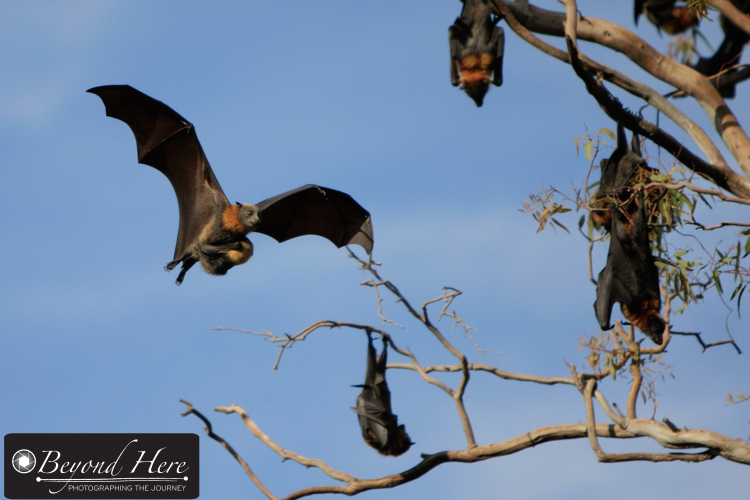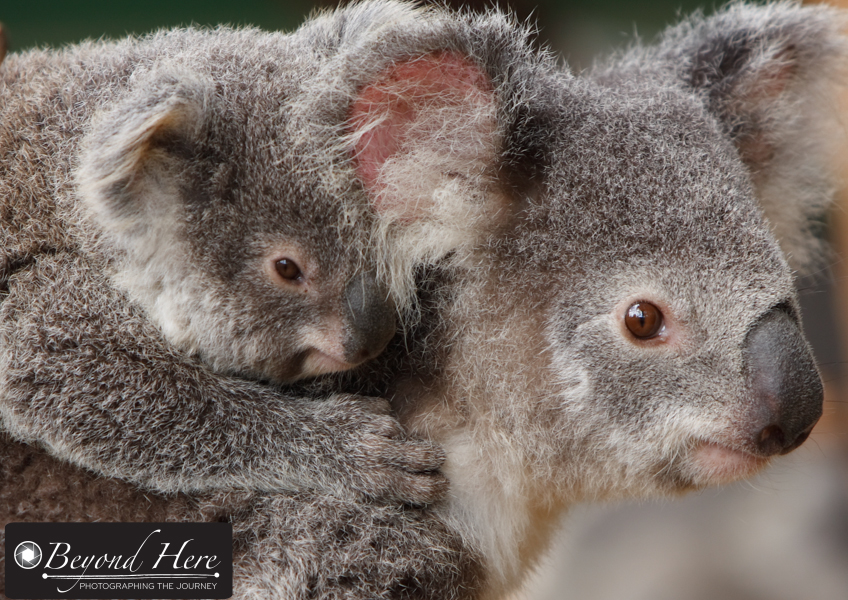This post looks at one of my favorite wildlife photography locations – Yarra Bend Park in Melbourne, Australia.

Grey headed flying fox showing off its wingspan. Yarra Bend Park, Melbourne, Australia
Where is it?
Yarra Bend Park is 4km north east of the Melbourne central business district in the suburb of Kew. If you are familiar with Melbourne, it is also close to Abbotsford, Collingwood, and not too far from Richmond. It is a 260 hectare park, which makes it the largest area of natural bush land close to the city center. In the area are large residential areas, bush land, parks, sporting fields, and golf courses. The Yarra River winds its way right through Yarra Bend Park. The area is popular with cyclists, walkers, mountain bikers, and has a great lookout area which provides views of the sun setting behind the city.
How do I find it?
I first went to Yarra Bend Park in 2008 when I was invited to play golf at the public golf course there. I have since found out that it is well known in Melbourne, but I had not been there before 2008. My round of golf, which I remember being a particularly bad (!), was the first of many trips.
What can I do there?
Actually, more than I realized! I looked up the Parks Victoria website and it shows that you can do walking, jogging, golf, fly fishing, picnic, sports, eat at the restaurant, visit Studley Park boathouse, and see Dight Falls.

Position yourself to get clear background for your image
But the main thing I go to see are the huge number of grey headed flying foxes. They roost in the trees next to the Yarra River in very large numbers. There are publicly accessible walkways through these areas on one side of the river. You can see them hanging upside down in the trees, sometimes sleeping, sometimes interacting with each other, and now and then keeping an eye on you! If you had a view that bats or flying foxes did nothing during the day, that’s not the case. On most times I’ve visited there is plenty of noise and movement, and it is fairly straightforward to get images of bats in flight. In early summer, October and November, if you look closely you can also see them flying with their babies clinging to their chest.
About Grey Headed Flying Foxes
Grey headed flying foxes are the largest bat in Australia. They have a dark grey body, a light grey head, and reddish-brown fur around their necks. The adults have an average wing span of 1 meter and can weigh up to 1 kg. They rely on sight to find food, and so they have relatively large eyes for a bat. But the thing that strikes you when you see them at Yarra Bend Park is just how many there are. It’s a huge thriving community of bats!
What Equipment Should I Take?

The Canon 70-200mm f2.8 lens
While there are a lot of flying foxes at Yarra Bend Park, they are small animals and will often be some way off in the trees. To get close up images of them, you’ll need at least a 200mm lens. Even better is a 300mm or 400mm lens. (All the images on this post were taken with a 200mm lens.) For camera bodies, I use my Canon 7D for the high burst rate. It is ideal for taking images of these flying foxes in mid air. And I always take several memory cards. It is easy to take plenty of shots in burst mode and I don’t want to run out of memory.
What Types of Shots Can I Get?
Due to the large numbers of animals here, you can get a range of different images. It is possible to get these shots of flying foxes:
- hanging upside down staring straight at you
- interacting with each other seemingly oblivious to any humans nearby
- in flight
- isolated against a grey or blue sky
- in silhouette against the sun
- showing the veins in the wings
How do I Take Shots of Bats in Flight?

Flying foxes gather in big numbers at Yarra Bend Park
Taking shots of the flying foxes in mid flight is not difficult – particularly as there are so many of them. My suggestions for achieving this shot are to:
- position yourself so you can get an uncluttered background
- if it is a windy day, get them flying into the wind. They will be going slower which makes this shot easier
- use the continuous focusing mode on your camera and track them in flight
- use the burst mode to take a series of images in quick succession
- use a fast shutter speed. My best images of these animals have been at 1/2500s and faster shutter speeds
Why is Yarra Bend Park a Favorite Wildlife Photography Location?
Yarra Bend Park is one of my favorite wildlife photography spots because:
- it is so easily accessible. It is only a few kilometers from the city and there is easy parking
- I have visited over 20 times, and the large group of bats has always been there
- there are so many animals, that a wide range of images is possible
- the contrast of being able to shoot what I consider to be a night animal during the day is unique
Take Me There!
I’ve always thought that Yarra Bend Park would be a great place to conduct photography tours. If you’d like me to take you there, drop me an email at craig@beyondhere.com.au
Thanks for reading all the way to here! I hope you might think of bats differently now. Yarra Bend Park is one of my favorite wildlife photography locations.

Bat in flight, with baby on its chest






























